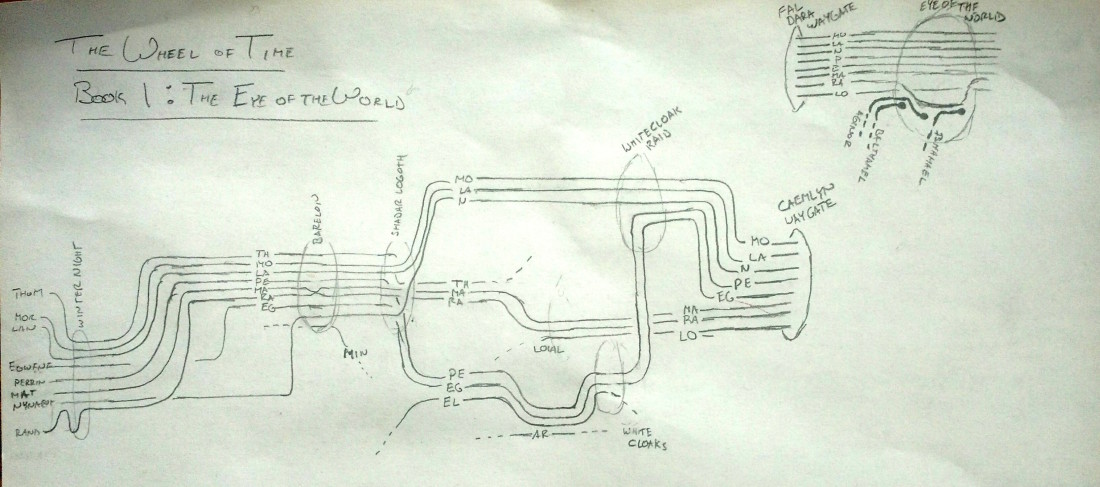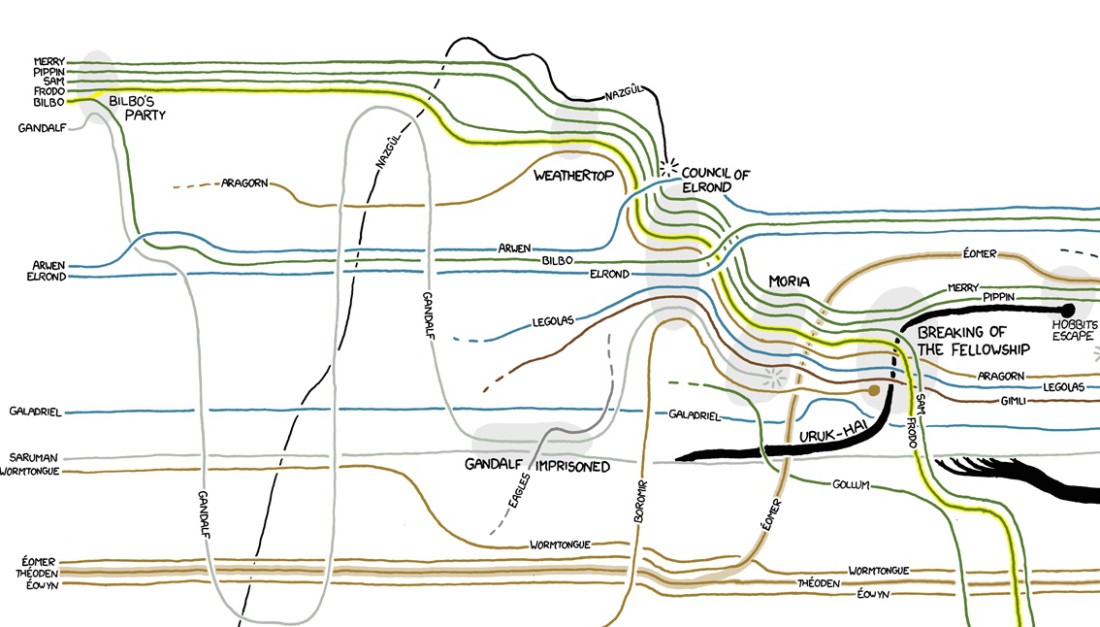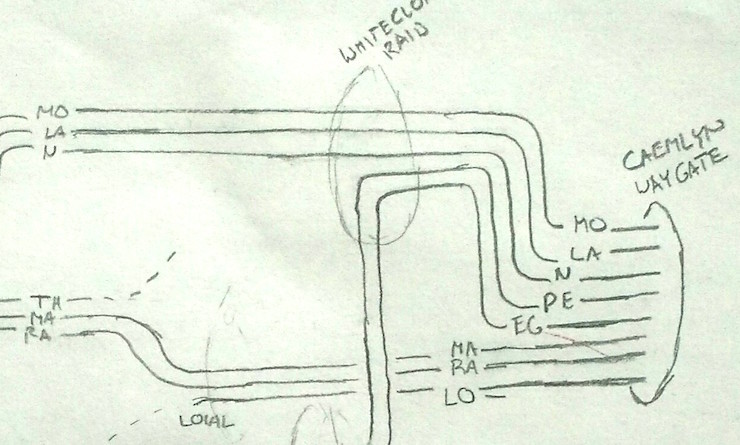Reddit user ryeinn recently posted a rough draft of a narrative chart of Robert Jordan’s The Eye of the World, the first book in The Wheel of Time fantasy series. Inspired by XKCD’s narrative character-based charts, ryeinn’s chart reveals an interesting look back on the series’ beginnings. As sprawling and complex as The Wheel of Time becomes, its beginning is just as unified, if not more so, as Tolkien’s The Fellowship of the Ring.
Ryeinn himself states that this chart is only a rough draft (it’s missing Rand’s encounter with Elayne, Morgase, Gawyn, Galad, and Elaida). As you can see, for the majority of the book the dominant characters travel the same path and experience the story together.

In regards to story structure, the journey of Rand and company in Eye of the World shares much with the journey of Frodo and the Fellowship. Jordan’s novel is notable in that all but one of the characters present at the end of The Eye of the World appear in the first few chapters, before their journey begins in earnest. In comparison, the Fellowship builds its cast over the course of Tolkien’s first book, finally breaking them up in the climax of the novel. Jordan also breaks Rand’s “fellowship,” but notably saves that for the beginning of his second book, The Great Hunt, and makes it a more conscious and duty-driven choice made by the characters instead of a necessity borne of crisis.

The narrative chart of The Eye of the World is also interesting in how it follows the structure of movie screenplays. This is perhaps easiest to see through Blake Snyder’s three-act “Save the Cat” outline, which charts the progression of story and character in a screenplay with the following structure. I’ve noted where I believe this structure is present in Eye of the World in parentheticals.
Act 1: Establishing
- Thesis: World before the story (Prologue and Emond’s Field chapters pre-Narg)
- Opening image/scene (Dragonmount and/or heron sword)
- Theme stated (Moiraine tells the ta’veren that they have to save the world from darkness)
- Catalyst (Trolloc attack on the party)
- Debate (Even if Rand isn’t the Chosen One, the bad guys believe he is, so he has to at least defend himself and his loved ones by assuming that mantle. His sense of duty wins out, prompting him to leave the village.)
Act 2: Transformation
- Story splits into A and B (and C and…) threads (Shadar Logoth)
- Fish out of water moments in each thread (Too many to name)
- A, B, C, threads cross or resonate with each other (Whitecloak raid, Perrin, Rand, and Mat denying their innate power at same time, all three under duress)
- False victory or false defeat (Everyone reunites in Caemlyn in one piece)
- Stakes raised and a ticking clock element introduced (Bad guys are targeting the Eye of the World)
- The bad guys close in! All is lost! (The Ways, followed by the Blight)
- Dark night of the soul (Almost literally depicted in the environmental descriptions of The Ways and The Blight. Scary places!)
Act 3: Resolution
- Story threads merge (Party leaves Caemlyn via The Ways)
- The ultimate threat is reached (Green Man saves them from The Blight, they reach the Eye)
- Hero triumphs by combining lessons learned from first and second acts (Rand purposefully uses saidin to fight back against the Shadow)
- Big finale (The party vs the Forsaken at The Eye of the World, Rand vs. Ishamael)
- Final image (Dragon banner)
The Eye of the World, in hewing closely to screenplay structure, becomes more evocative and visual as a result. The story moves rapidly, aided by the branching viewpoints being confined solely to the second act of the novel. Bringing the characters back together at the end of the second act allows them to combine their transformative experiences. They essentially learn about each other all over again at the same time as the reader, which has the happy result of ensconcing a reader more deeply within the world of the book. This happens any time a character’s journey parallels the reader’s journey, but it is notably potent in the story structure of The Eye of the World.
It will be interesting to see how the narrative charts of subsequent Wheel of Time novels unspool. The series transitions away from the “Save the Cat” structure after three books or so, but if you combined all of the books into a massive narrative chart, would they depict a larger version of that three-act structure?
Regardless, ryeinn’s chart makes clear just why Wheel of Time fans get hooked by The Eye of the World. The first book is immediate and engaging, following a plot structure that we find comfortable, and which we experience on a daily basis, repeated in scores of movies, shows, and books.
Chris Lough writes about fantasy, superheroes, and stuff for Tor.com. His website does not follow a three-act structure.










